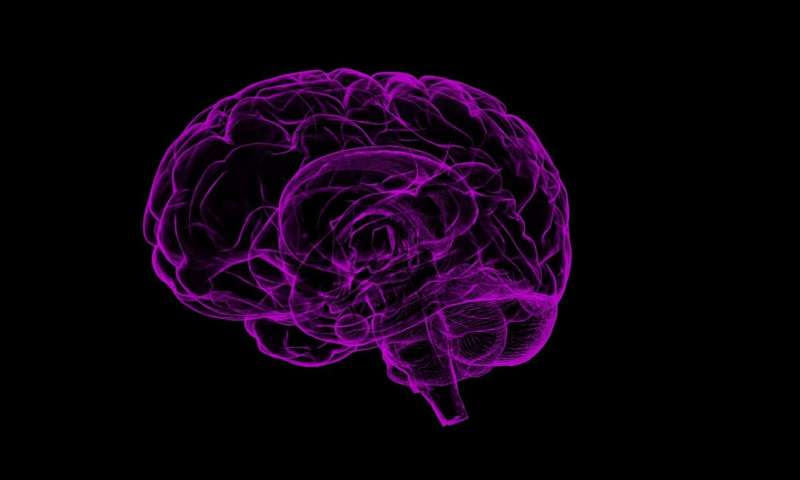by University of California – San Diego
Researchers at University of California San Diego School of Medicine have discovered differences in brain circuitry that contribute to starvation and weight loss in people with anorexia nervosa (AN).

The findings, published in the March 12, 2020 online issue of The American Journal of Psychiatry, shed new light on the neurobiology of starvation and emaciation—primary characteristics of AN.
“It has long been puzzling how people with anorexia are able to starve themselves and become emaciated, when most people struggle to lose just a few pounds,” said Walter Kaye, MD, Distinguished Professor of Psychiatry and executive director of the Eating Disorder Research and Treatment Program at UC San Diego Health. “Because we lack effective treatments that normalize eating in AN, this illness is often chronic and has the highest death rate of any behavioral disorder.”
The National Eating Disorders Association estimates that at any given point in time between 0.3 and 0.4 percent of young women and 0.1 percent of young men suffer from AN. A 2007 study found that 0.9 percent of women and 0.3 percent of men reported anorexia during their lives. Young people between the ages of 15 and 24 with AN are estimated to be at 10 times greater risk of dying compared to same-aged peers.
In their latest study, Kaye and colleagues compared brain responses of two groups of female participants who received tastes of sugar water and plain water after either fasting or after a standardized meal. One group of women had been diagnosed with AN, but were in remission (RAN); the other group did not have AN. Neural responses were observed and measured by functional magnetic resonance imaging.
Hunger in people and animals makes food more rewarding because hunger activates brain circuits that motivate eating. The major finding in this study, said Kaye, was that hunger failed to activate this food reward circuit in people with AN, which raises the possibility that the trait underlies restrictive eating and severe weight loss in persons with a history of AN.
Specifically, data showed that the brain’s ventral caudal putamen produced varied responses to hunger within the two study groups. RAN participants and the control group both displayed similar responses to food stimulation when sated, but in the RAN group, response to hunger was abnormal. In addition, the RAN group showed reduced neural activation to taste stimulation in the brain’s anterior insula and reduced connectivity between the right anterior and mid-dorsal insula and ventral caudal putamen.
“These findings highlight the specific brain circuitry that may play a key role in unhealthy eating in anorexia,” said Kaye. “In part, this circuitry involves connected regions that are important for recognizing the feeling of hunger, motivating us to want to eat when we are deprived of food, and helping to initiate actual eating or to decide to avoid it. This same circuitry has been implicated in appetite changes associated with major depression. The distortion of signals in the brain in both depression and anorexia impact the awareness of hunger, the motivation to eat and food avoidance.”
Kaye added that the study is the first to show its dysfunction in anorexia after tasting food, specifically after a period of fasting.
Disturbances of this circuitry may help explain symptoms that often occur in anorexia. Most people report that hunger increases the reward and pleasure of food, and thus drives the motivation to eat. Individuals with AN, however, tend to have a disconnect in this process, Kaye said, noting that individuals with the disorder tend to be obsessed with food, yet do not eat.
Study results support the idea that the brain in anorexia is able to recognize hunger signals, but individuals with the disorder may lack an intuitive drive to consume food because they are not able to convert this hunger signal into the motivation to eat.
In addition, many persons with AN describe increased anxiety when they eat, even when they are famished. Researchers found that those with a history of AN associated higher anxiety with a reduced food reward signal in a part of the brain involved in initiating eating behavior. The finding indicates anxiety may contribute to starvation because it impairs the ability to start eating.
The researchers said the findings suggest a powerful biology contributes to restricted eating behavior in AN, and that the findings provide new answers to how those with anorexia are able to become severely underweight.
“These data open the door to potential new ways of treating this disorder,” said co-author Christina E. Wierenga, Ph.D., associate professor and clinical neuropsychologist in the Department of Psychiatry at UC San Diego School of Medicine. “For example, developing behavioral strategies for enhancing initiation to eat or compensating for altered motivational drives may be helpful. In addition, the brain circuitry implicated in these findings have also been highlighted in other studies and support a fresh look at medications acting on the dopamine system.”

Leave a Reply